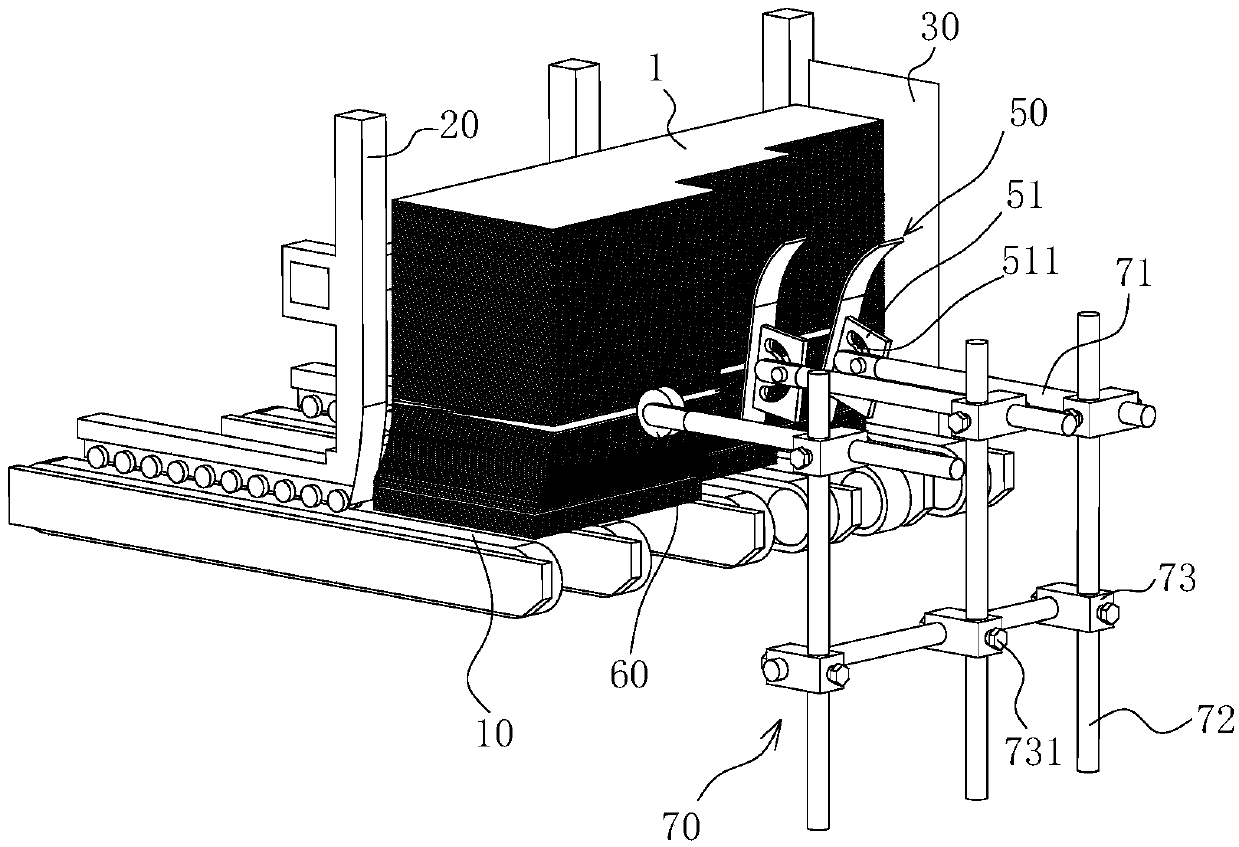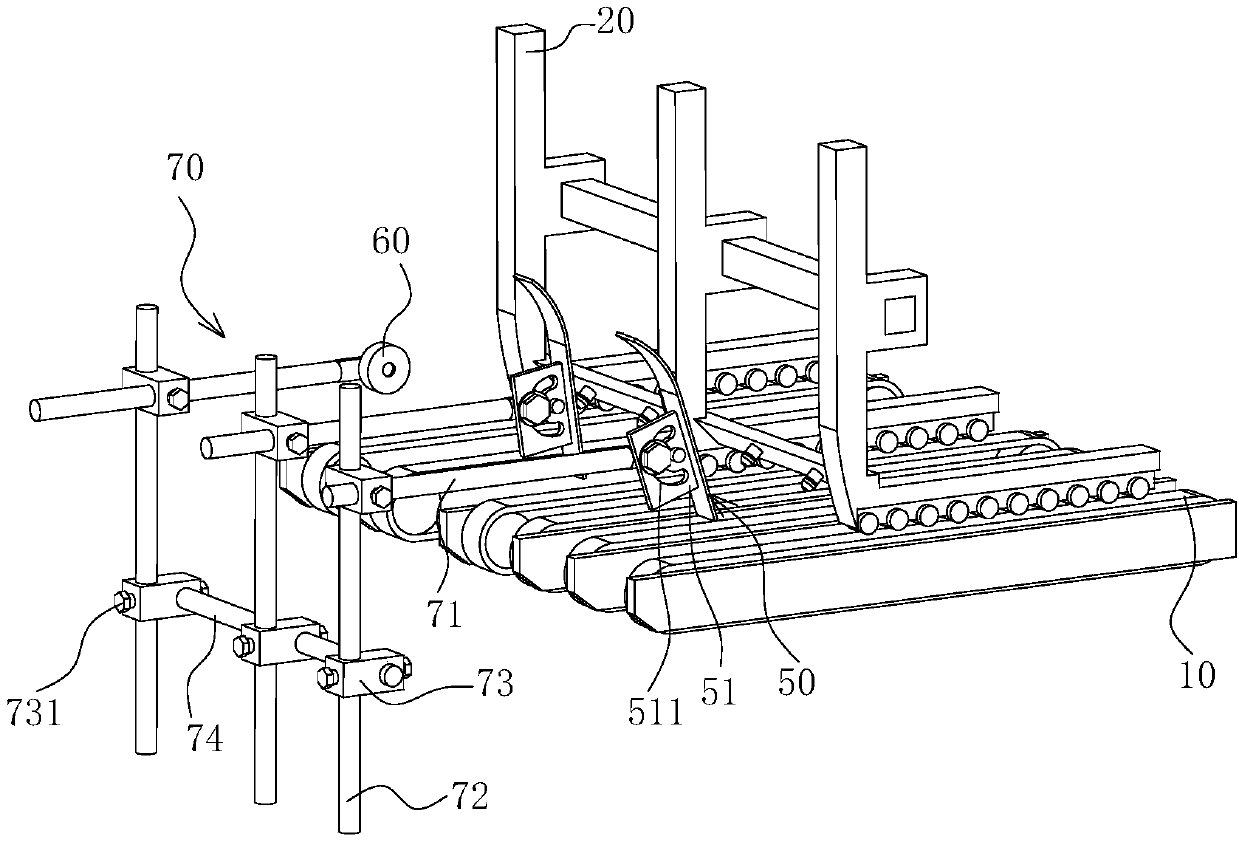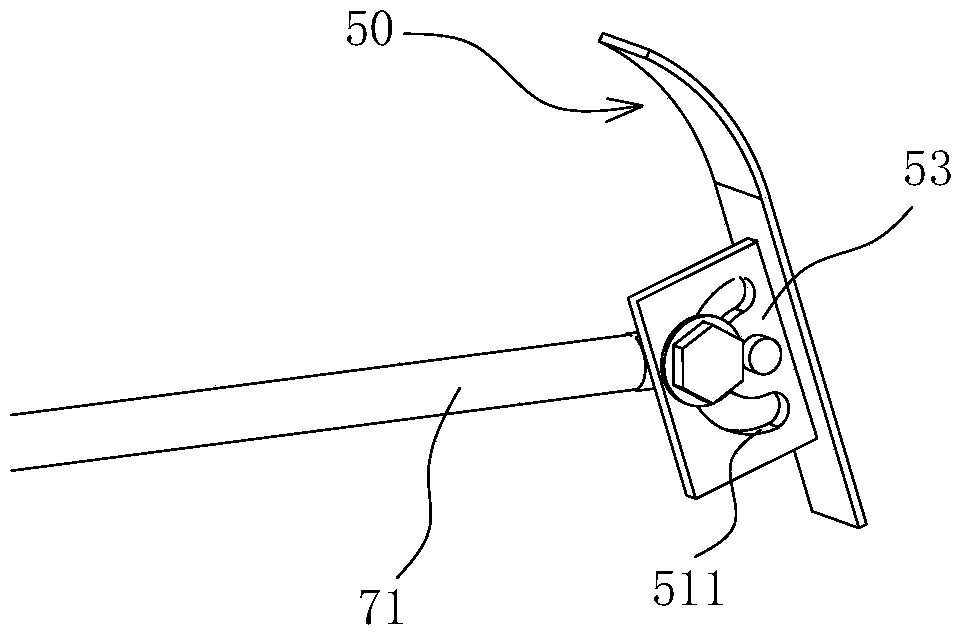Paper board stack separating device
A separation device and cardboard technology, applied in the field of carton or carton processing system, can solve problems such as damage to printed cardboard, difficulty in continuing to convey, slipping, etc.
- Summary
- Abstract
- Description
- Claims
- Application Information
AI Technical Summary
Problems solved by technology
Method used
Image
Examples
Embodiment Construction
[0009] See attached figure 1 , 2 , 3, a cardboard bundle 1 separation device, including a baffle 20 located at the feed end of the conveyor belt 10, the distance between the lower edge of the vertically arranged baffle 20 and the conveyor belt 10 is greater than the thickness of one cardboard and less than two cardboards thickness, the lower part of the baffle 20 transitions from back to front and from top to bottom with an arc-shaped curved surface, and a pusher 50 is arranged behind the baffle 20, and the lower part of the plate or rod-shaped pusher 50 is from top to bottom. An oblique arrangement from back to front.
[0010] In the above solution, the cardboards are placed in stacks on the feeding end of the conveyor belt 10 against the baffle 20, and the cardboards on the lower layer are misaligned along the obliquely arranged pusher 50 and the arc-shaped curved surface of the baffle 20. Stacking, the dislocation process of the cardboards can eliminate the adhesive force...
PUM
 Login to View More
Login to View More Abstract
Description
Claims
Application Information
 Login to View More
Login to View More - R&D
- Intellectual Property
- Life Sciences
- Materials
- Tech Scout
- Unparalleled Data Quality
- Higher Quality Content
- 60% Fewer Hallucinations
Browse by: Latest US Patents, China's latest patents, Technical Efficacy Thesaurus, Application Domain, Technology Topic, Popular Technical Reports.
© 2025 PatSnap. All rights reserved.Legal|Privacy policy|Modern Slavery Act Transparency Statement|Sitemap|About US| Contact US: help@patsnap.com



